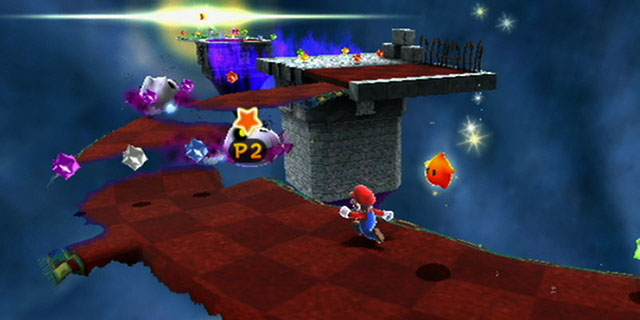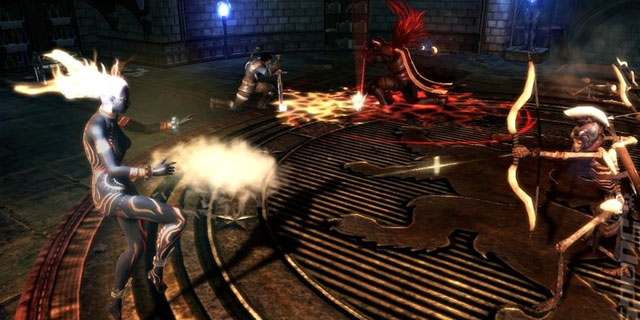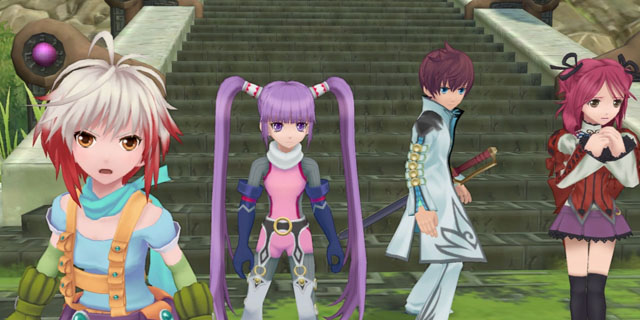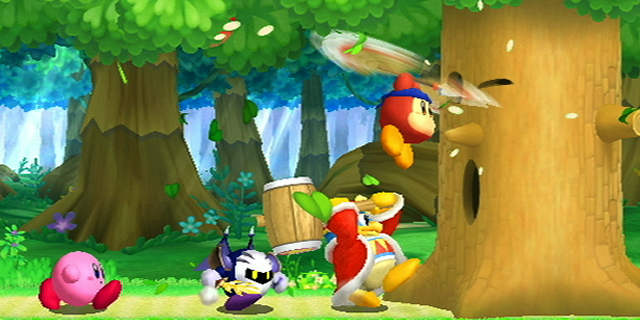
Games, even cooperative ones, aren’t always a field of equals. There’s been some controversy lately about what to call this brand of asymmetrical co-op, but I choose to credit the first popular instance of the concept: Tails in Sonic the Hedgehog 2. Tails was fully-playable by a second player, but he was invincible, re-spawned when he left the screen and wasn’t given any credit for the team’s exploits. As a little one particularly lacking in skill in Sonic games, I appreciated it then as a way to get through the game by basically only using Tails. These days, I appreciate it because it allows for a cooperative experience in a game with design elements that should have precluded a second on-screen player.
There’s really a sliding scale for games like these. Sometimes, you’re barely taking part. Other times, you’re an almost-equal, with just a few things restricted to Player One. Here are the most common set-ups, along with some recommendations for fun ones to check out.

The cameo
Sometimes, the definition of “playing” is in question with some people for games in this category, but I think there’s a definite niche for games like this. You aren’t reminiscent of the first player, and frankly, they’d probably be just as fine if you weren’t there. But you can collect things! Or help trigger a thing! The most popular example of this is Co-Star Mode in the Super Mario Galaxy games, which allow you to collect Star Bits with the pointer and help out with jumping and freezing enemies. Sometimes, a setup like this can seem demeaning, but there are a few great scenarios for these experiences.
Certainly, if you’re a parent, these are cool. With young kids, you can let them “play” with you and help out, and when they get a bit older, you can be the helper as they explore the world themselves. Even if you’re not, these can be fun as “the other person in the room.” (Former writer Eric Schabel and I played through most of Galaxy 2 that way for our review, handing off primary duties every level or two.) You don’t have to be good at games, but maybe you just want to do something with the person who is. Or maybe you have work to do, but want to take a break sometimes and pop in for a level.
If you’re looking for more, de Blob 2 has a solid implementation of this type of thing too.

The sidekick
If you were wondering where Tails fits in, it’s here. In these games, you’re the invincible counterpart to the vulnerable first player. You may not have quite the move set or progression, but it’s close. You’re just not equal because it doesn’t matter if you die. This is a common setup for “drop-in, drop-out” experiences, since dropping out doesn’t affect progression. So we see it in games like DeathSpank, with a second player that doesn’t level up or die but moves and acts similarly. Maybe you’re there, but it’s not your story, like in Fable III or Dungeon Siege III.

The guest star
Sometimes a game has different segments, allowing players to be roughly equals some of the time and secondary in others. The first prominent example of this is Treasure’s classic Gunstar Heroes, in which the two guys stood on even ground… until one of them became invincible and jumped into a turret. This can also be found in the games of the Tales series. In battles, you’re equals and can really strategize to take down tougher enemies. Outside of battles… I don’t know, grab a sandwich? Catch up on tweets? Because you have no duties whatsoever.

The co-star
These games are almost symmetrical, but there were just a few things they couldn’t quite even out. Many times, it’s camera control, since it’s tough to let four mess with it when they share a screen. Of course, this can be a small deal (like in the local co-op functionality of the PSN version of Castlevania: Harmony of Despair), when player one needs to make the occasional adjustment, or almost game-breaking (like Elebits), when camera movement is a big part of the game itself. The most subtle of these are the best: Kirby’s Return to Dream Land lets other players drop in and out, but when they’re there, they are as mortal and capable as anyone.
It’s important to make this distinction: not all asymmetrical co-op is dependent co-op; sometimes you’re taking on completely different, but roughly equal, roles. (It looks like we’ll see a lot of those on the Wii U.) Those are a lot of fun too, and something I’ll try to cover in the future.
What are your thoughts on dependent co-op? Let us know in the comments!



















